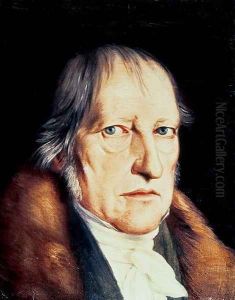Jacob Schlesinger Paintings
Jacob Schlesinger was a German painter and printmaker born on November 26, 1792, in Frankfurt am Main. His artistic career is often associated with the German Romantic movement, although he was also influenced by classicism, which was prevalent in the early part of the 19th century.
Schlesinger's education in the arts began at the Städelsches Kunstinstitut in Frankfurt, where he was a pupil of the painter Matthäus Loder. After his initial training, he further honed his skills and style in Paris, studying under the neoclassical artist Jacques-Louis David. This exposure to French neoclassicism left a significant imprint on his artistic output.
Upon his return to Germany, Schlesinger became an active member of the art community in Berlin. He worked as a professor at the Prussian Academy of Arts, where he taught painting and was well-regarded for his portraits, which combined a Romantic sensibility with the clarity and formality derived from his neoclassical training. His works often featured figures from mythology and history, executed with a fine attention to detail and an emphasis on the emotional content of the subject matter.
Throughout his career, Schlesinger enjoyed the patronage of several important figures of the time, including members of the Prussian royal family. His portraits and historical scenes were well-received, and he was recognized for his contributions to German art. Schlesinger's legacy is that of a talented painter who bridged the gap between the neoclassical and Romantic styles, creating works that were both aesthetically pleasing and rich in emotional depth.
Jacob Schlesinger passed away on September 19, 1855, in Berlin. Though he may not be as widely recognized today as some of his contemporaries, his work remains a testament to the artistic movements that shaped European art in the early 19th century. His paintings can still be seen in museums and galleries, offering insight into the period's evolving aesthetic and the cross-currents of neoclassicism and Romanticism that characterized the era.
